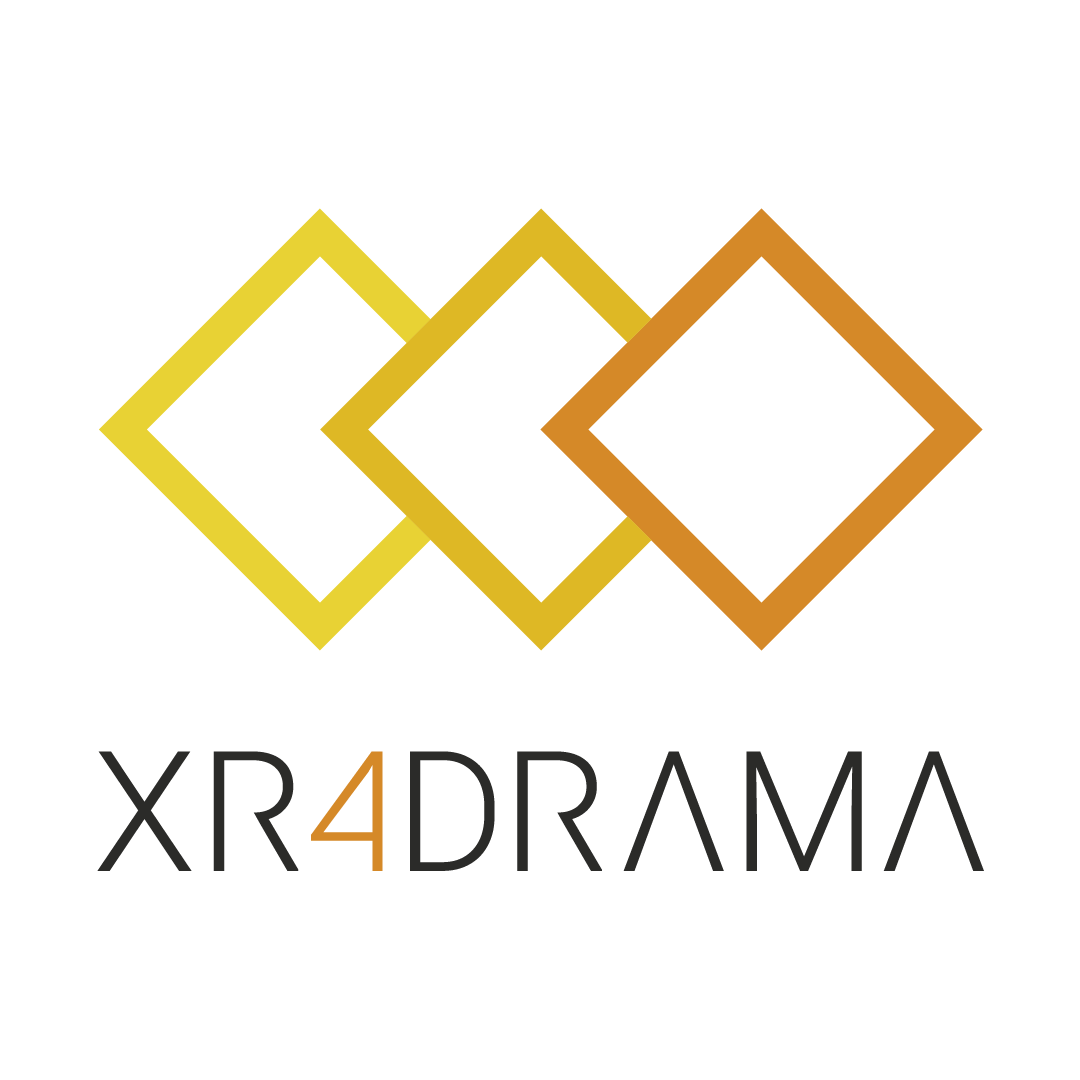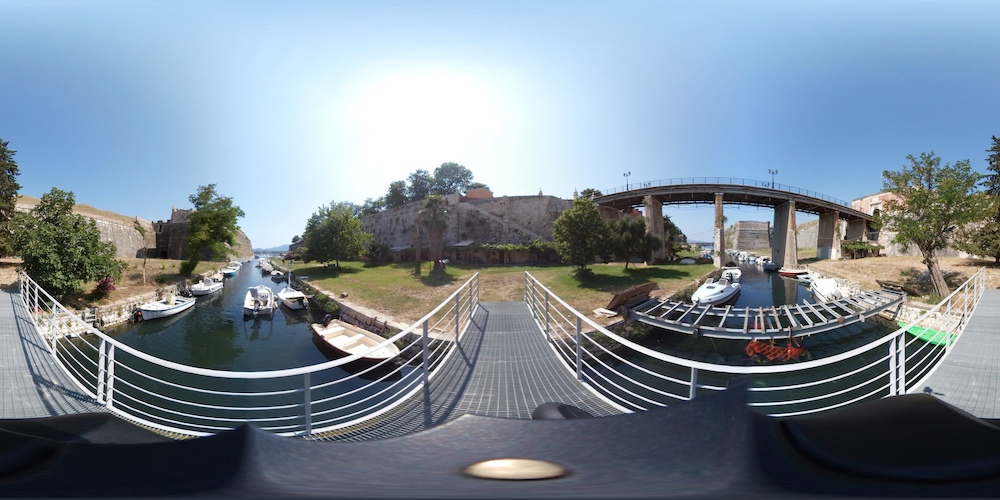
Nine months after the project kick-off, we’re thrilled to give you a first look at the XR4DRAMA application prototype, currently being built at Nurogames.
For now, there are two applications, developed with Unity 3D as standalone tools for Windows.
The first one – which is already functional – offers both simple and enhanced modes of situation awareness (XR4DRAMA L1SA and XR4DRAMA L2SA) while the (unfinished) second one will allow for more or less full immersion (XR4DRAMA L3SA). The underlying concept is explained in this post.
So how would media producers use the software?
In a first step in application #1, users have to create a project, give it a name and choose a location. If desired, they can also choose a period of time (an option that will make the system display – or hide – temporary features of a place). Once a designated area for filming/producing has been selected, the program automatically generates a detailed map with ground levels, buildings, and landmarks in 3D. The data comes from Open Street Map and Mapbox. To get a better sense of the place, users can then toggle points of interest like public toilets, ATMs, shops etc. Once again the data comes from Open Street Map. It’s also possible to put textures on the model or play with basic lighting conditions (there are places where it gets dark quite early, so you better shoot in the morning or right after lunch).
Here are a couple of screenshots:
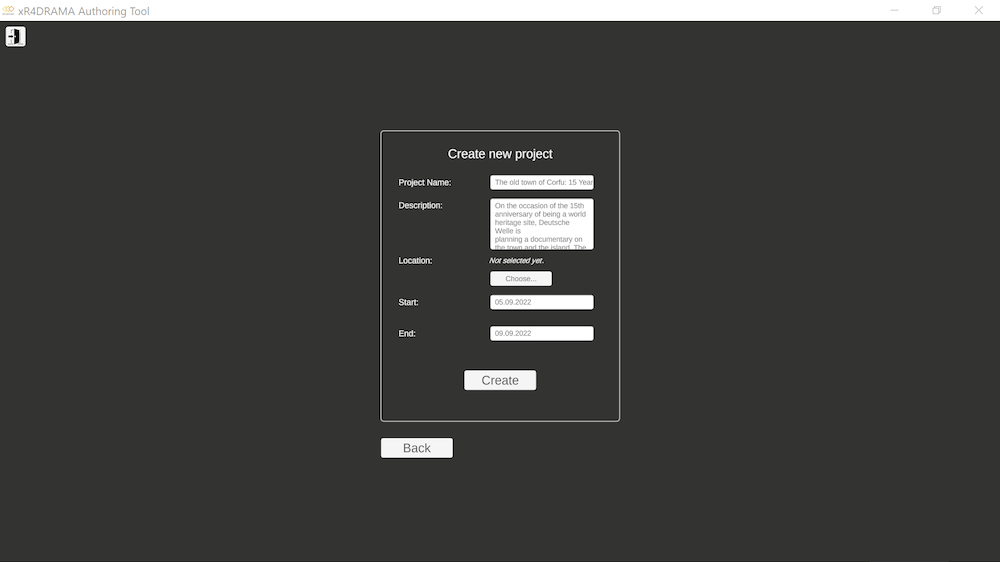
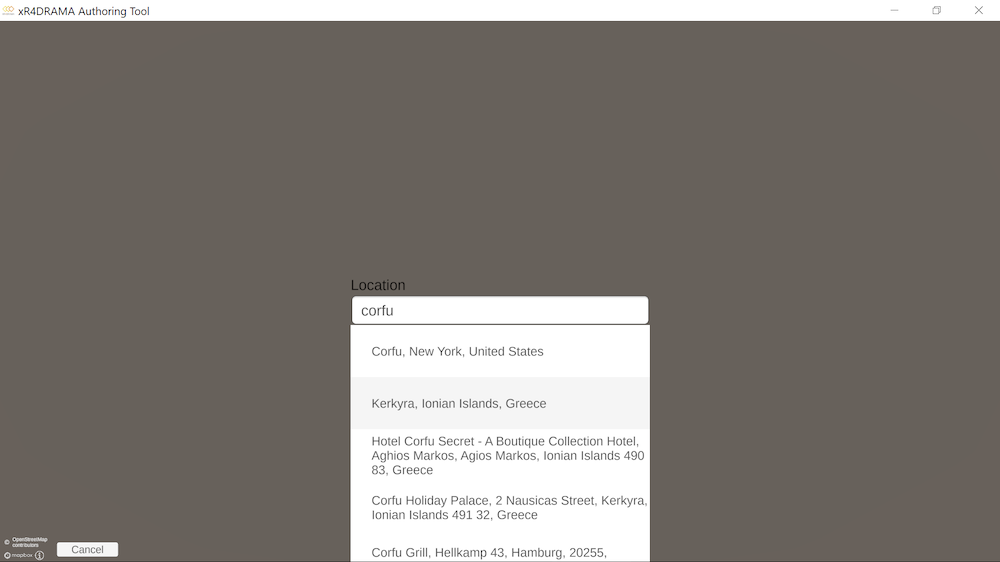
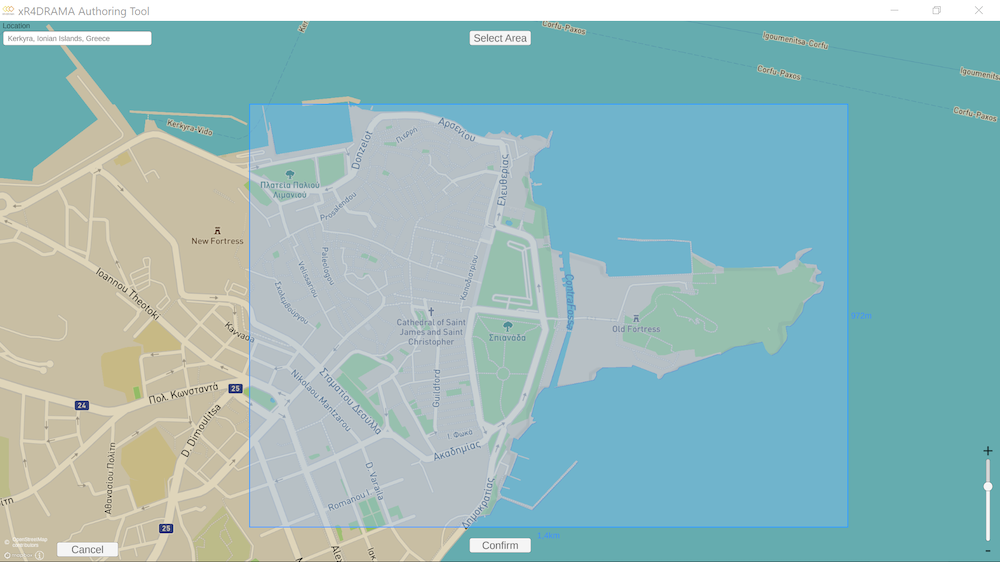
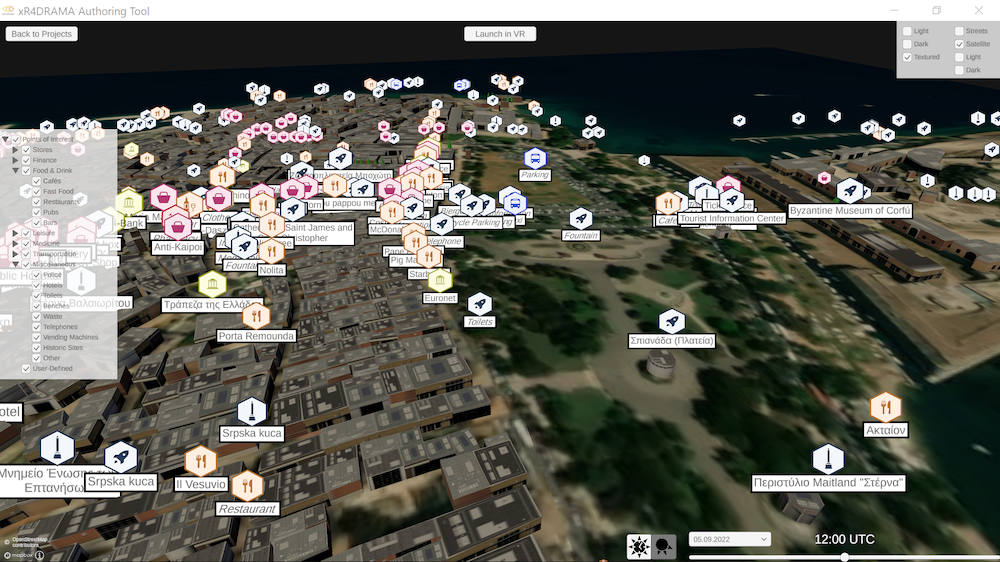
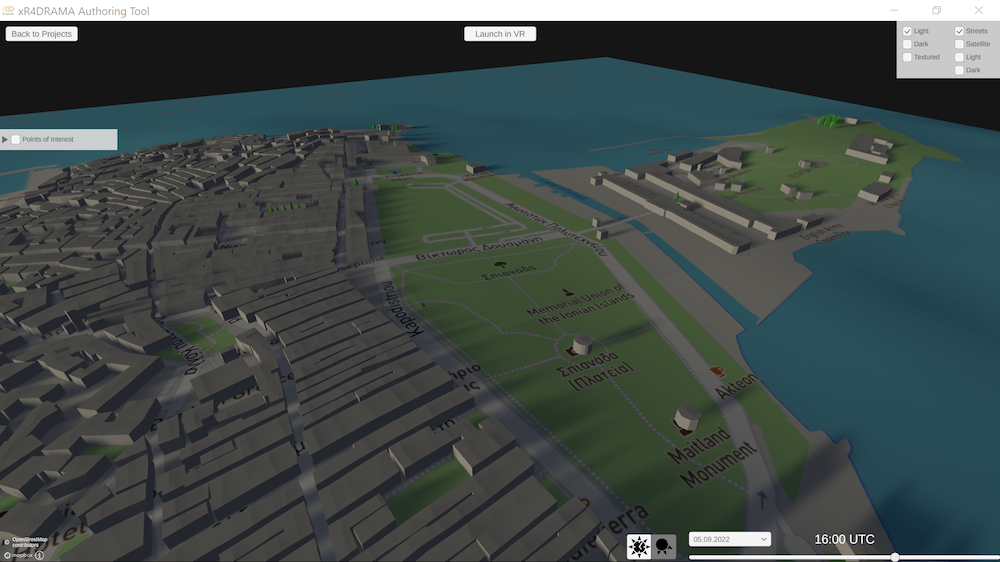
Later on, the system will be able to fetch and display more information (from all kinds of sources), and there will also be a backend, so location scouts and managers can add their own data (notes/comments, sound recordings, photos, videos, photogrammetric 3D reconstructions).
Application #2 is about full immersion: Team members wearing XR headsets will eventually be able to “jump” into scenes in order to explore them from a first person perspective. At this level, collaborative preparations for a media production will include detailed discussions of the location, sophisticated lighting simulations, and trying different shots and angles with virtual cameras/drones.
Currently, the prototype mock-ups look like this:
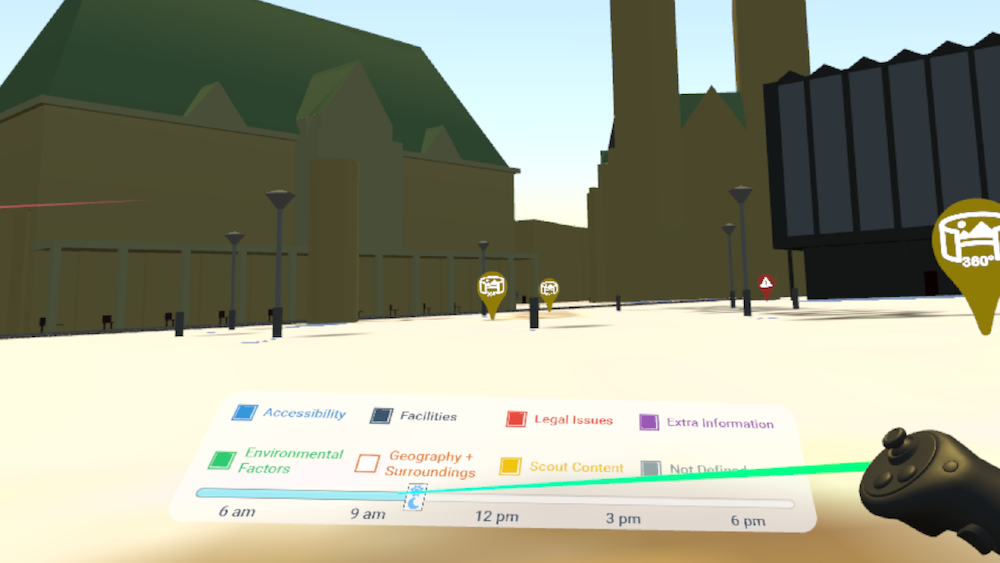
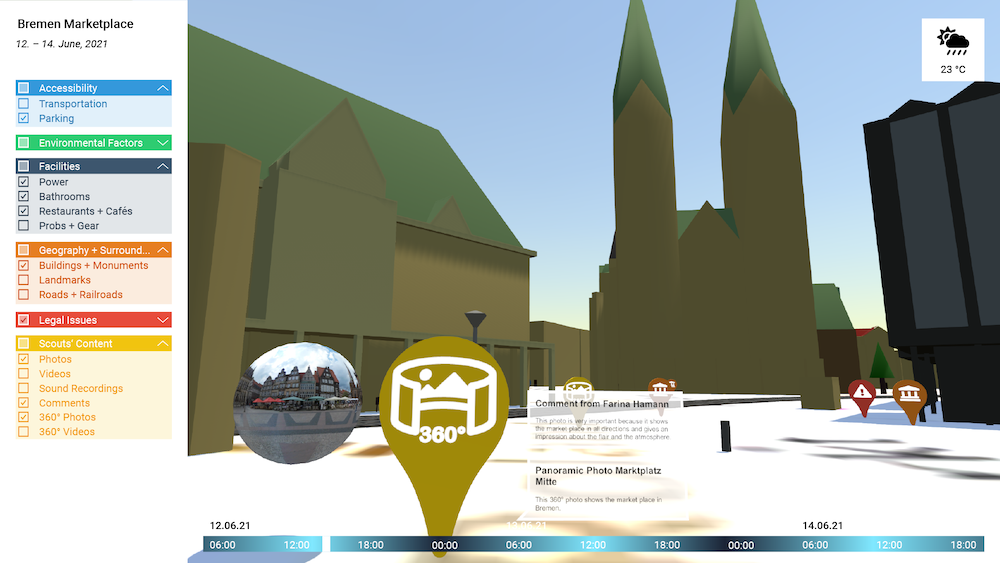
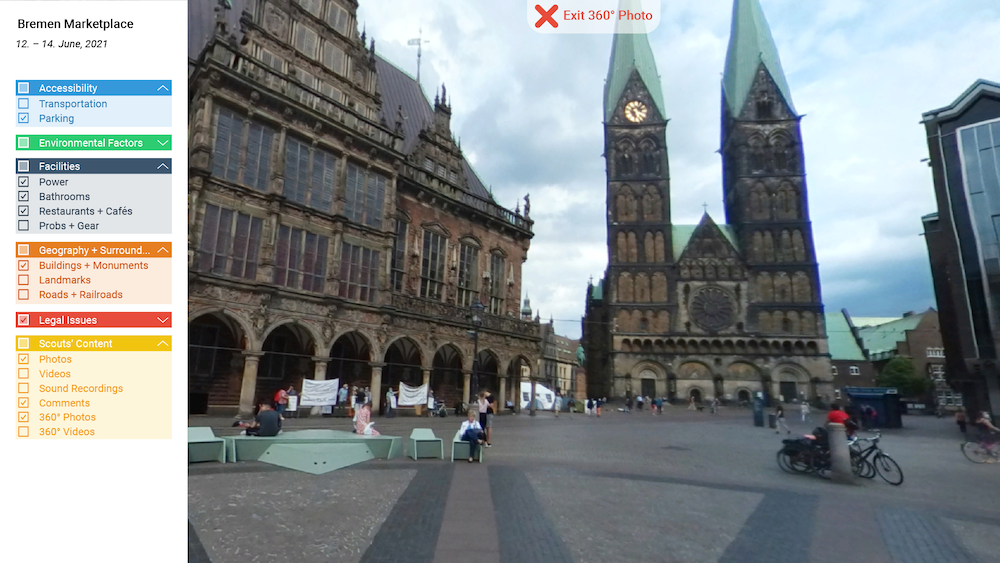
So what’s up next? Further development, prototype testing in the field (in Greece and Germany) – and even more development. We’ll keep you posted!
